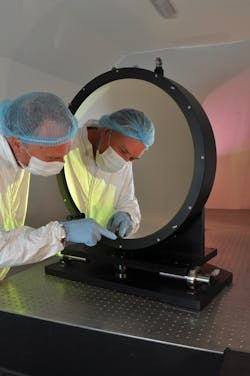Optical Surfaces astronomical optics detect low levels of light
From the IR to the x-ray wavelength range, astronomical optics use light-controlling components for imaging celestial objects, such as using a telescope. They combine precisely machined lenses and mirrors to reduce image distortion and sensors to detect low levels of light. Optics undergo interferometric, topographical, and fringe analysis tests.
Optical Surfaces
Kenley, Surrey, England
www.optisurf.com
